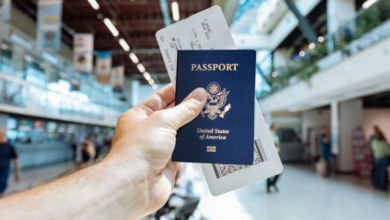From School Trips to Office Tours: 40-Seater Mini Bus Rental Options in Delhi

Not every trip is about where you’re going. Sometimes, it’s about how you get there — and whether everyone arrives without confusion, delays, or drama.
That’s usually the worry with group travel in Delhi. The bigger the group, the more complicated things get. You’ve got pickup delays, carpooling chaos, or someone showing up in the wrong cab altogether. A 40-seater minibus rental in Delhi solves most of that upfront. One bus. One driver. Everyone moves together—less chance of things falling apart midway.
Who Really Needs a 40-Seater, Anyway?
This size hits a sweet spot. It’s enough for a mid-sized team or a couple of school classes, but not so massive that it feels empty.
There’s something practical about having just enough room. For school trips, teachers can keep an eye on everyone. For corporate teams, it encourages interaction without feeling too close for comfort. You don’t get the stiffness of a larger coach, and it’s definitely better than splitting the team across 5 SUVs.
Not Fancy, but Functional
These buses won’t win style awards. That’s fine — they’re built for utility, not flair.
You’ll usually find cushioned seats, sliding windows, luggage shelves, and working air conditioning (hopefully). Some might have USB charging, a few even throw in speakers or a screen. But comfort comes first, especially on long drives through unpredictable city traffic.
Sometimes, all that matters is a seat that doesn’t make your back regret the booking.
Delhi’s Favourite Uses for 40 Seater Rentals
There’s a pattern here. The most frequent bookings? They’re for events where timelines matter and delays aren’t tolerated.
- School excursions — Science City, National Rail Museum, or Qutub Minar. Teachers want reliability more than anything else.
- Team outings — Think of offsites in Gurugram or workshops in Noida. Fewer cabs, less confusion.
- Event shuttles — Between hotels and venues. Especially common for weddings with guests from out of town.
- Pilgrimage groups — When temples in Mathura or Vrindavan are on the itinerary.
People don’t rent a 40 seater for the thrill of the ride. It’s about predictability — showing up together, leaving together.
See also: The Evolving Role of On-Site Training in Workplace Safety and Compliance
Choosing Between AC and Non-AC Buses
The question still gets asked more than you’d think. Most pick AC by default — Delhi’s weather doesn’t leave much choice.
But for short rides or winter trips, some do opt for non-AC to save cost. There’s no correct answer here. If you’re carrying children, senior citizens, or guests, AC is worth it. For local drives under an hour? You might get away without it.
This part often comes down to budget, not comfort. And that’s a trade-off groups make based on their own threshold.
Planning Interstate Trips? Check the Permits
Not all buses are cleared to leave Delhi.
If you’re heading to nearby states — say, a school trip to Jaipur or a religious visit to Haridwar — make sure the vehicle has an All India Tourist Permit. This is required for any commercial vehicle crossing into another state.
Drivers without it can get stopped at the border. Worst case? Long delays. And in some cases, return journeys get cancelled last minute. That’s avoidable. Just check the paperwork during booking. Ask for a copy if needed.
Cost Factors Few People Consider
The rental quote usually looks simple at first. But dig a bit and you’ll find a few moving parts:
- Distance and duration of the trip
- Whether the driver’s meals and stay are included
- Type of vehicle (model year, AC/non-AC)
- Day of the week — yes, weekends are pricier
- Parking fees at specific locations
Then there are toll charges on routes like the Eastern Peripheral Expressway — often forgotten during planning. Many operators mention them in fine print. Don’t let that catch you off guard.
Safety and Cleanliness Still Matter
The trip might be short, but don’t compromise on basics.
- Are seatbelts available and working?
- Does the driver have an ID and a licence handy?
- Is the interior reasonably clean?
- Do the windows lock properly?
You’re responsible for the group’s safety. A few minutes spent inspecting the bus can prevent a lot of trouble on the road.
There’s also a difference between “working air conditioning” and “cold air for 3 rows only.” Try to inspect the vehicle a day before, if possible.
Booking: What the Process Looks Like
It’s mostly standard. But still, some operators cut corners.
- You send your route and travel date.
- They send a quote with vehicle images (ask for actual ones).
- You agree to the terms and pay an advance.
- The day before, you get the driver’s details and tracking link (some operators offer this).
Cancellations, reschedules, or late arrivals — get all those terms upfront. If anything feels vague, move on. Delhi has plenty of operators. You don’t need the one who won’t answer the phone.
Why 40 Works Better Than Two 20s
On paper, splitting the group between two smaller vehicles sounds smart. But in practice, it’s often more hassle.
- Extra drivers
- Higher fuel cost
- Harder to coordinate stops
More vehicles means more chances of someone running late, taking a wrong turn, or stopping unscheduled. Unless you need the flexibility, a single 40 seater is usually easier to manage.
You won’t need to worry if the other half of your group has arrived, because you’ll all be in the same place.
Final Thought
Group travel in Delhi is never perfect. Traffic won’t cooperate. Schedules won’t hold perfectly. And someone might forget their ID at home.
But getting the transport right takes away the most significant stress.
A 40-seater minibus isn’t luxury. It’s not meant to be. What it offers is control. You know where everyone is. You leave and arrive together. And on a tight schedule, that’s more useful than anything else.
Sure, there’ll be bumps — literally and otherwise. But if everyone gets home in one piece and on time, that’s a success.





